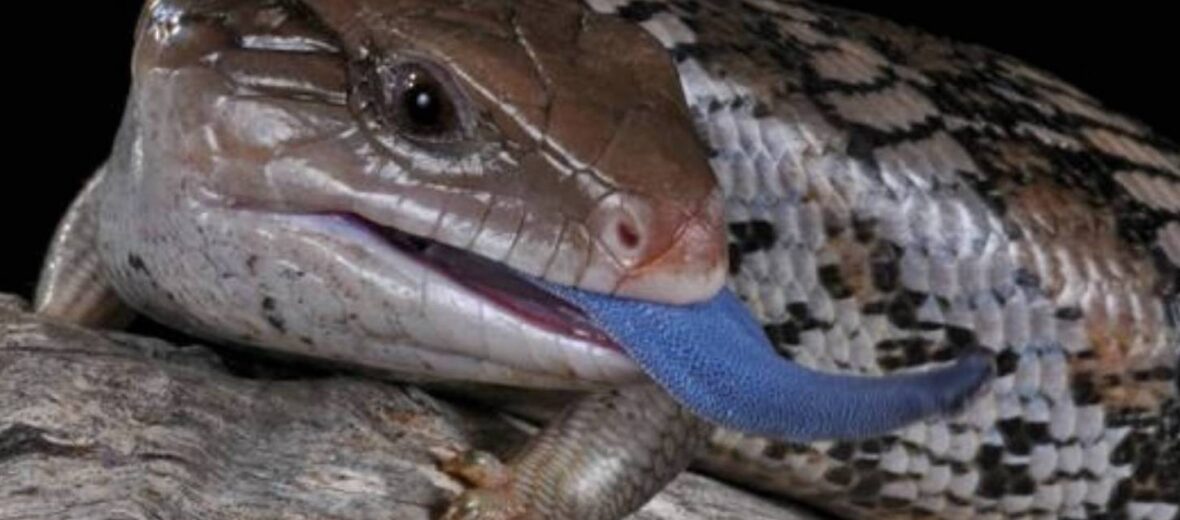
The blue-tongue skink is the largest member of the skink family. They are known for their think bodies stubby little T-Rex arms/legs, and mostly their long bright blue tongues. These lizards spend the majority of their day basking or looking for food. They also have one heck of a bite!
First the Stats…
Scientific name: Tiliqua
Weight: Up to 18 ounces
Length: Up to 2 feet
Lifespan: Up to 20 years
Now on to the Facts!
1.) Blue-tongued skinks are omnivores (eat plant and animal matter). They feed on a variety of small creatures such as insects, other reptiles, and a host of plant matter.
2.) They do not have very well-developed teeth, but they have the potential of a very powerful bite. These lizards also have a nice little habit of not letting go, once they bite; kind of like a pit bull.
3.) When threatened, the blue-tongued skink puffs up its body, sticks out its long blue tongue, opens its large mouth, and hisses.
4.) Skinks have smooth overlapping scales evolved to keep out dirt and debris.
5.) With their broad, wedge-shaped head they are often mistaken for the highly venomous death adder!
But wait, there’s more on the blue tongue skink!
6.) Blue-tongues are found in both Australia and New Guinea. In Australia, blue-tongued skinks are quite common and are often seen in people’s yards, where they eat pest insects.
7.) These skinks are typically docile and rarely show aggression.
Did you know…?
Their young develop in soft shelled eggs inside the mom and then hatch from the eggs when ready, and leave mom. The eggs are then reabsorbed by the mother as additional calcium.
8.) This lizard is not listed with the IUCN currently.
9.) The blue-tongue skink is highly sought after in the pet trade.
10.) They are capable of tail autonomy (they drop their tail when threatened).
Now a Short Blue-Tongue Skink Video!
Also, check out the Critter Science YouTube channel. Videos added frequently!
Want to suggest a critter for me to write about? Let me know here.



